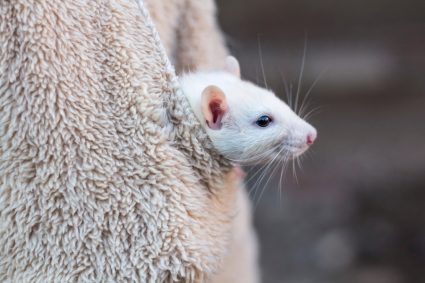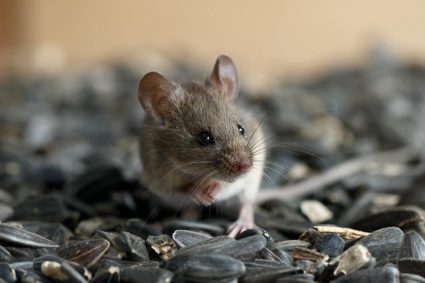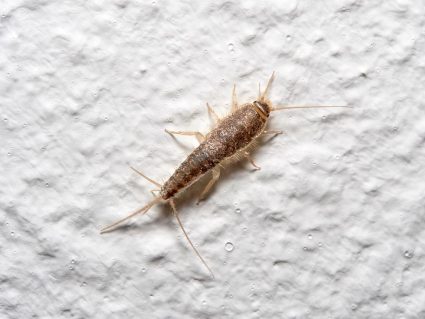
Diatomaceous earth (DE) is a natural, non-toxic substance that many homeowners use as a defense against various pests, including fire ants. But how effective is it? Does DE kill fire ants, or is it just a myth? This article aims to explore these questions and provide an in-depth understanding of DE’s effectiveness in controlling fire ants.
Diatomaceous Earth (DE) can kill individual fire ants by cutting through their exoskeletons and causing them to dehydrate. However, its effectiveness in eliminating entire fire ant colonies is limited because it’s unlikely to reach the queen ant. Additionally, DE’s potency is reduced when wet, and it needs to be reapplied after rain or irrigation.
What is Diatomaceous Earth (DE)?
Diatomaceous earth is a type of soft, siliceous sedimentary rock that crumbles into a fine white to off-white powder. It’s derived from the fossilized remains of diatoms, a type of hard-shelled algae. When ground into a fine powder, DE has an abrasive feel, similar to pumice powder, and is highly absorbent.
DE is used in various applications, including filtration, mild abrasive in products, and as an insecticide. The insecticidal quality of DE is due to its physico-sorptive properties, which lead to the dehydration of insects upon contact.
How Does DE Work on Fire Ants?
When fire ants come into contact with DE, the sharp edges of the diatoms cut through the ants’ exoskeletons, causing them to dehydrate and eventually die. However, DE’s effectiveness in killing entire fire ant colonies is debatable. Some sources claim that it can kill fire ants and chase them away from the treated area, while others argue that it rarely eliminates ant colonies when used alone.
One of the main issues with using DE for fire ant control is that it’s highly unlikely to reach the queen, which is essential for eliminating the colony. Additionally, DE loses its effectiveness when wet, as it washes into the soil and needs to be reapplied after rain or irrigation.
Is DE Safe to Use Around Pets and Children?
Food-grade DE is considered safe for use around pets and children. However, there are some precautions to take when using DE:
- Avoid inhalation: DE can cause lung irritation if inhaled. It is essential to use breathing masks or coverings for your nose and mouth when applying DE.
- Keep it dry: DE remains effective as long as it is kept dry and undisturbed.
- Use in well-ventilated areas: Apply DE in areas with good ventilation to prevent airborne DE buildup.
- Do not apply directly to pets: It is generally advised not to apply DE directly to your pet’s fur or dry skin, as it can cause respiratory issues.
- Keep out of reach: Store DE in a place where children and pets cannot access it.
Pros and Cons of Using DE for Fire Ant Control
Like any pest control method, using DE to control fire ants has its pros and cons.
Pros:
- DE is a natural, non-toxic pesticide.
- It can be effective in killing individual ants that come into contact with it.
- DE is safe for humans, pets, and the environment when used correctly.
Cons:
- DE’s effectiveness in killing entire fire ant colonies is questionable, as it may not reach the queen.
- DE needs to be reapplied after rain or irrigation, as it is only effective when dry.
- It can cause respiratory issues if inhaled, so care must be taken during application.
- DE may only irritate the ants and cause them to move their mound rather than killing them.
Alternatives to DE for Fire Ant Control
While DE can be a part of your fire ant control strategy, it might not be enough to eliminate a sizable infestation. Other methods include insect growth regulators (IGRs), baits, liquid insecticides, mound treatments, and indoxacarb.
Conclusion
In summary, while DE can kill individual fire ants, its ability to eliminate entire colonies is limited. It’s a natural and non-toxic option, but care must be taken during application to avoid inhalation. Additionally, DE may need to be reapplied after rain or irrigation, and it may only cause the ants to move their mound rather than killing them. For more extensive infestations, consider using DE in combination with other methods for a more effective fire ant control strategy.
Frequently Asked Questions
What is the difference between food-grade and pool-grade DE?
Food-grade DE is the type that is safe for use around pets and children and is also safe for ingestion by humans and animals. Pool-grade DE, on the other hand, has a higher concentration of silica and is chemically treated, making it unsafe for ingestion or use around pets and children.
Can DE be used for other pests besides fire ants?
Yes, DE can be used to control a variety of pests including bed bugs, fleas, cockroaches, slugs, and other types of ants. It works in the same way, by cutting through the exoskeletons of these pests and causing them to dehydrate and die.
How should I apply DE for fire ant control?
DE should be sprinkled around the perimeter of the fire ant mound, rather than directly on it, to avoid causing the ants to scatter and relocate. It should be applied on a dry day and reapplied after any rain or irrigation. Remember to wear a mask to avoid inhaling the DE during application.
Will DE harm beneficial insects in my garden?
Yes, DE is non-selective and can harm beneficial insects such as bees and ladybugs if they come into contact with it. Therefore, it’s best to use DE sparingly and only in areas where pest activity has been observed.












